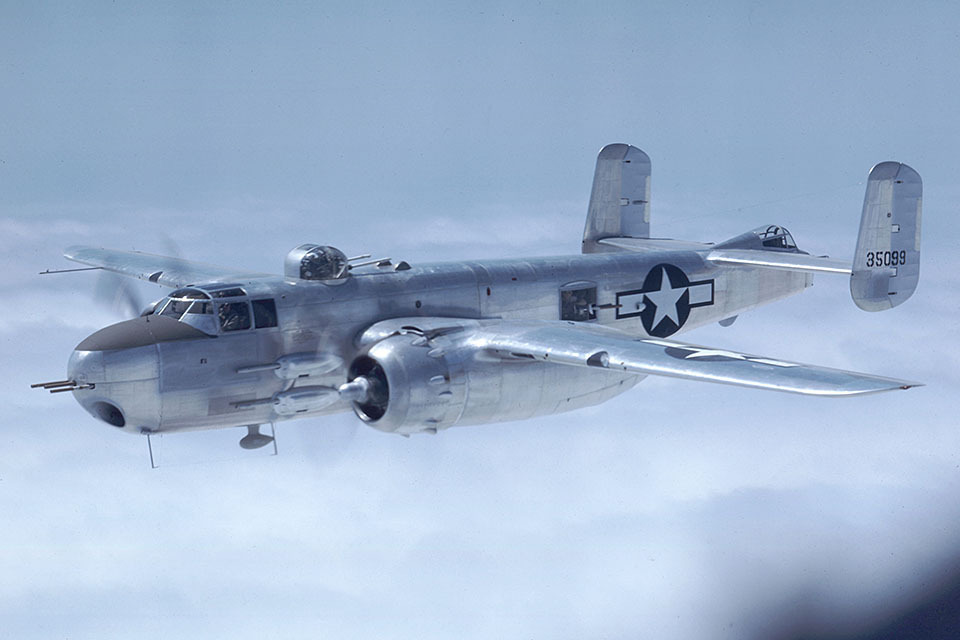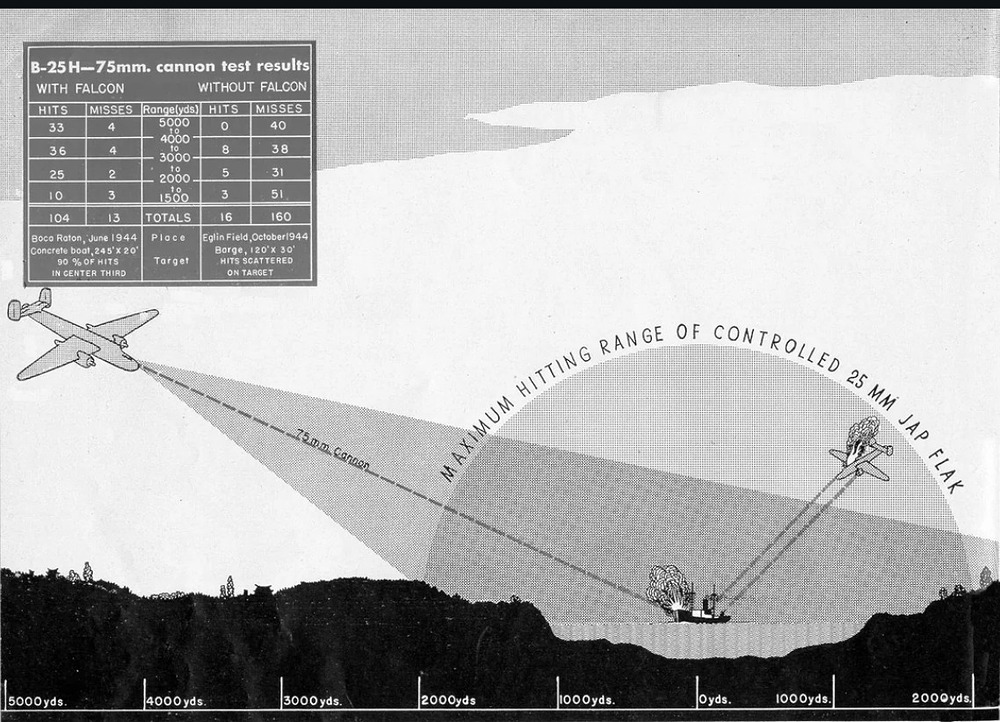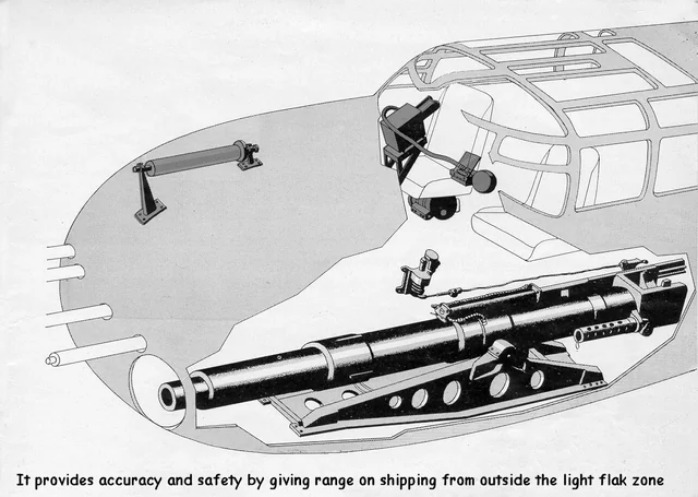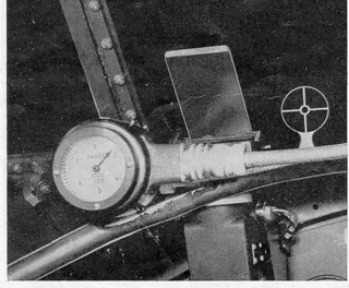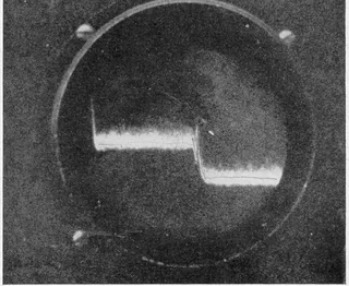History
The earlier B-25G, armed with the 75 mm M4 cannon, met the combat need for a heavy-hitting aircraft capable of striking shipping and ground targets in the Pacific. However, its defensive shortcomings became apparent, so a B-25C (serial 42-32372) was selected as a test bed for improvements. Flown on May 15, 1943, it served as the prototype for what became the B-25H, a variant designed to enhance both offensive and defensive capabilities.
The B-25H differed significantly from the G. The dorsal turret was moved forward into the navigator’s compartment, freeing space in the aft fuselage for staggered waist gun positions. A factory-installed tail turret with twin .50-caliber machine guns replaced the improvised tail positions used in field-modified aircraft, with the gunner seated under a greenhouse canopy that provided far better working space. On the flight deck, the copilot’s position was deleted, the instrument panel was redesigned for single-pilot operation, and a sighting system was added for both bombardment and cannon fire. Additional armor protection was installed around the cockpit.
One of the major changes was the installation of the lighter T13E1 cannon, still manually loaded by the navigator. In the solid nose, the two forward-firing machine guns of the B-25G were doubled to four.
The first production B-25H (serial 43-4105) flew on July 31, 1943, with production running from August 1943 to July 1944. These aircraft carried additional .50-caliber machine guns in blister packs on the sides of the fuselage, bringing total armament to one 75 mm cannon and 14 machine guns. The H model could mount either the R-2600-13 or R-2600-29 engines, both producing 1,700 horsepower, giving identical performance. A total of 1,000 B-25Hs were built: 300 B-25H-1-NAs, 300 B-25H-5-NAs, and 400 B-25H-10-NAs. The -1 variant carried gun packs only on the right fuselage side, while the -5 added gun packs to the left but deleted provisions for 2,000 lb bombs. The -10 incorporated further refinements to the pilot’s instruments and brake control system.
The first B-25Hs reached the Pacific in February 1944 with the 498th Bombardment Squadron. In service, they performed similarly to the B-25G in the strafer role but benefited from greater forward-firing firepower. However, as with the B-25G, combat experience showed the 75 mm cannon offered little advantage over heavy machine-gun armament. By mid-1944, targets suited to the cannon had become rare, and most missions were better served by massed .50-caliber firepower or bombs. By August 1944, the heavy cannon concept was largely abandoned in the Southwest Pacific, and in September, B-25Hs were passed to other groups, such as the 38th Bombardment Group, or returned to depots.
The 38th Bombardment Group welcomed the H model, and 24 were assigned to the 11th Bombardment Squadron of the Fourteenth Air Force in China in early 1944, where they were used primarily for river sweeps. In November, several of these aircraft were experimentally fitted with the new APG-13A “Falcon” gun-laying radar, which provided continuous range information to the pilot for accurate long-range cannon fire. This system was tested on B-25Hs 43-4584, 43-4071, 43-4924, 43-4989, and 43-4601.
The last B-25H was accepted in July 1944. In 1945, the 341st Bombardment Group in China received B-25Hs, which served until the war’s end, while the 1st Air Commando Group in Burma also employed the type.
For naval use, 236 B-25Hs were transferred to the US Navy and redesignated PBJ-1H. These retained their Army serials but were painted in Navy colors and assigned Bureau of Ships numbers.
